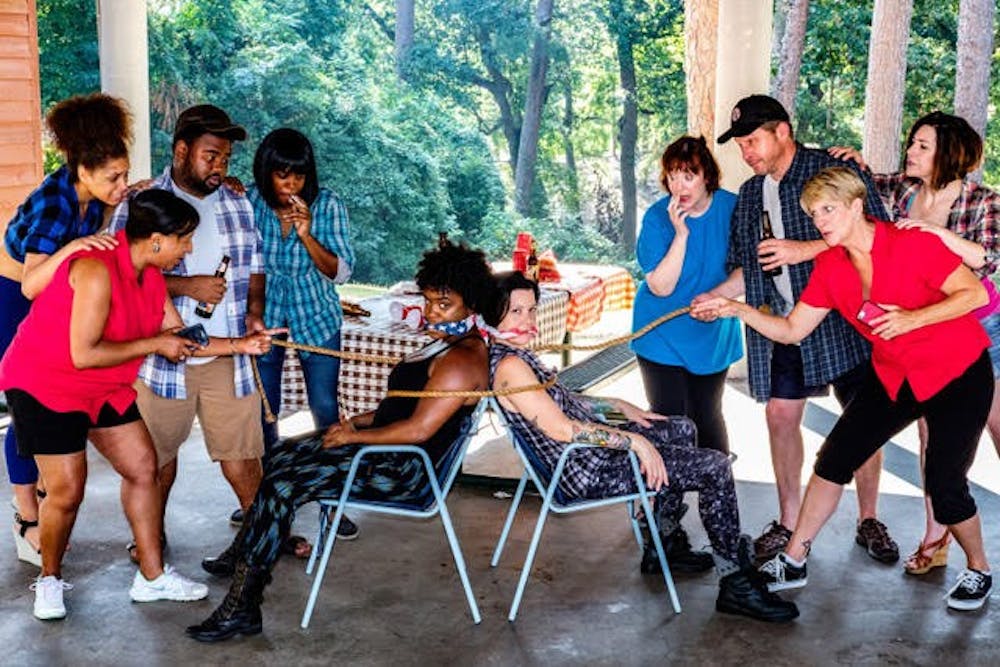When you first enter the non-profit Trustus theater, you are greeted by an entrance which makes you feel like you’re trespassing on a forbidden but well-cleaned warehouse. You’re guided toward your seat where complimentary popcorn awaits you. On stage, you see a simple park setting: two square wooden tables, a grill, a trashcan and an awning. The aroma of hot dogs on a grill surrounds you. The tagline on your playbill reads, “This Barbecue Ain’t No Picnic.” You read this and look at the simple stage design. What could possibly happen?
Barbecue, written by Robert O’Hara and first produced in 2015, depicts an intervention held by the dysfunctional siblings of a crippling crack addict (Christine Hellman). She doesn’t know the picnic is anything but a reunion. Farce ensues. However, there’s a twist: each scene switches between a white cast and a black cast of the exact same family. Each scene continues from where the last one left off. No real differences exist between the two versions of the family. The picnic turns ridiculous once the crack addict sister turns up, since she is tazed, gagged and then tied against a pole.
The situation is unbelievable. It’s humorous and far-fetched, and while I find the situation and concept successfully humorous, I didn’t think the jokes landed well. In the first scene, the oldest sister (Dewey Scott Wiley) asks if her pants make her look fat, and the brother (Christopher Cockrell) responds with, “Your fat is what makes you look fat.” The timing of the lines between these two characters makes it obvious the exchange functions as a joke. There are other similar jokes that fall flat. But when a tazer shows up, you can’t help but laugh at the ridiculous nature of this intervention. You just can’t believe it—but that’s the point. At the end of Act I, the audience learns the black family are actually actors. Act II is where the true nature of the play reveals itself and where the play shines.
Act II still plays out in the same park area, but it’s supposed to be the real park instead of a set like in Act I. The white Barbera, who wrote a memoir about her intervention, waits for the actor who will play her in the movie, which turns out to be the black version of Barbara we see in Act I, played well by Devin Anderson. As these two characters talk and argue, we learn that everything in white Barbera’s memoir is a lie. This is why Act I seems unbelievable. This reveal in Act II makes the whole play click. The play is definitely a commentary about misrepresentation and the lack of diversity in Hollywood, as shown by the end of the play where the scene is set at the Oscars and one of the films is called “A Movie About a Mentally Challenged Adult in the Holocaust with an English Accent.” But I think the play is mainly about the fake nature of culture and how we lie to seem cooler than we are. While the theme hides under a thick nature of farce, it’s there. Not only did the white Barbara lie about her intervention story, the black actor lies about herself and tries to put on a glamorous persona. Even her British accent is fake. This theme of fabrication even shows in the structure. The first act pretends the intervention situation is real and then reveals its true nature in the second act. The bait and switch works so well.
While I wasn’t into the play at first, I became really invested by Act II and came out of the theater really satisfied with the experience. Not only is the Trustus theater a great venue, every actor pulled off their character well and the direction was right for a farcical play like this one. I recommended you read the play. It’s a good case study of the integral role structure has in a piece.



